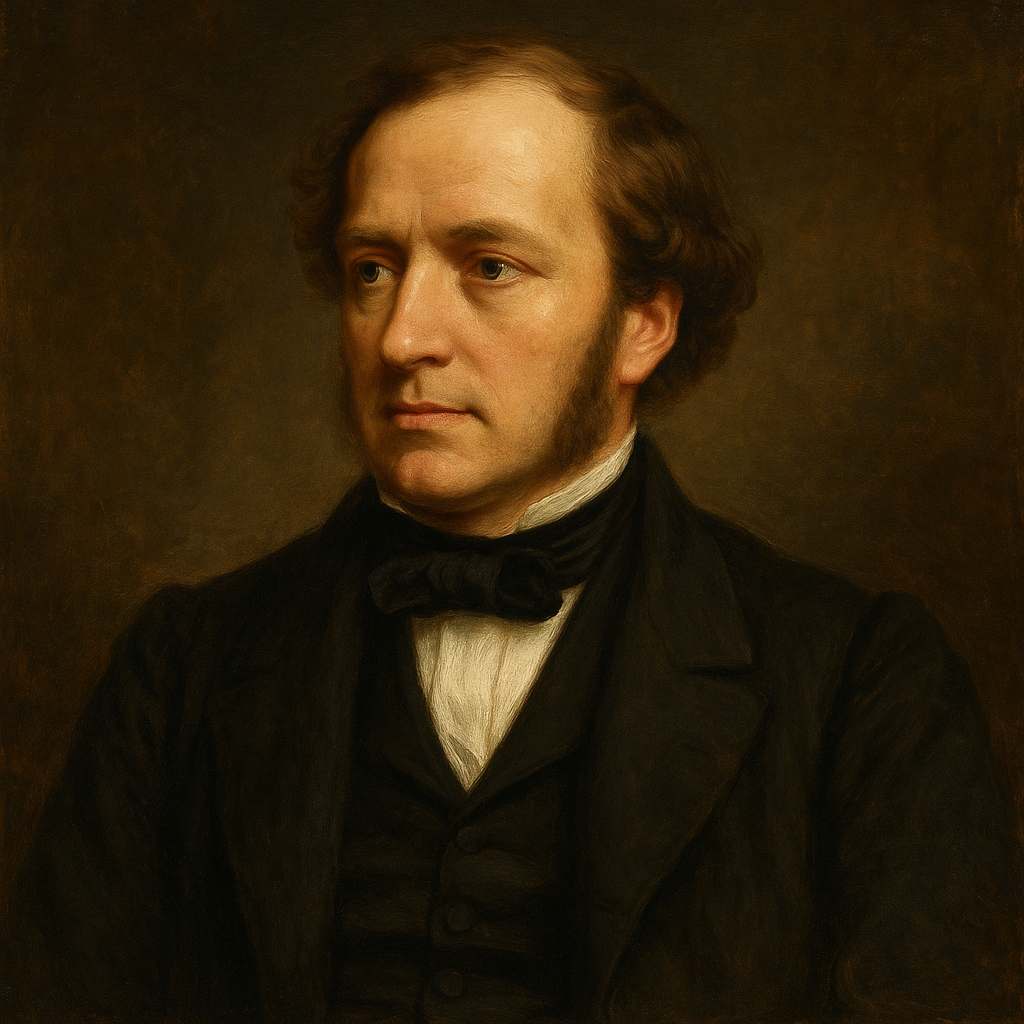Say not the Struggle Nought Availeth
Arthur Hugh Clough
1819 to 1861

Say not, the struggle nought availeth,
The labour and the wounds are vain,
The enemy faints not, nor faileth,
And as things have been they remain.
If hopes were dupes, fears may be liars;
It may be, in yon smoke concealed,
Your comrades chase e'en now the fliers,
And, but for you, possess the field.
For while the tired waves, vainly breaking,
Seem here no painful inch to gain,
Far back, through creeks and inlets making,
Comes silent, flooding in, the main.
And not by eastern windows only,
When daylight comes, comes in the light,
In front, the sun climbs slow, how slowly,
But westward, look, the land is bright.
Arthur Hugh Clough's Say not the Struggle Nought Availeth
Introduction
Arthur Hugh Clough's "Say not the Struggle Nought Availeth" stands as a masterful Victorian meditation on perseverance, hope, and the often-hidden nature of progress. Written in the mid-19th century, the poem emerges from a period of profound social and intellectual upheaval, when traditional certainties were being challenged by new scientific discoveries, industrialization, and changing social structures. This analysis will explore how Clough crafts a sophisticated argument about the nature of progress and change, employing maritime metaphors and natural imagery to construct a powerful message about persistence in the face of apparent futility.
Historical and Literary Context
The Victorian era's characteristic struggle between doubt and faith provides essential context for understanding Clough's poem. As a contemporary of Matthew Arnold and a product of the Oxford Movement, Clough was intimately familiar with the period's religious and philosophical tensions. His own departure from religious orthodoxy mirrors the broader Victorian crisis of faith, making this poem's message about perseverance particularly poignant. The poem's form - four quatrains with a regular ABAB rhyme scheme - provides a structural certainty that contrasts with its thematic exploration of uncertainty and possibility.
Analysis of Form and Structure
The poem's formal elements deserve careful attention. Clough employs a relatively straightforward meter that combines iambic and anapaestic feet, creating a rhythm that simultaneously suggests both military march and ocean waves - a dual movement that reinforces the poem's central metaphors. The quatrain structure, with its alternating rhymes, creates a sense of forward momentum while maintaining formal control, mirroring the poem's argument about progress being both challenging and inevitable.
Consider the opening line "Say not, the struggle nought availeth," which immediately establishes both the poem's argumentative stance and its slightly archaic diction. The use of "nought" and "availeth" places the work firmly within a traditional poetic register while simultaneously engaging with very modern doubts about the value of human effort.
Metaphorical Language and Imagery
The poem's sophisticated use of metaphor operates on multiple levels. The martial imagery of the first stanza ("wounds," "enemy," "faints not") gives way to maritime metaphors in the third stanza, creating a complex tapestry of reference that suggests both human conflict and natural forces. The waves that seem to make no progress on the visible shore become a powerful metaphor for apparent futility masking real achievement.
Of particular note is the masterful transition between the second and third stanzas. The image of smoke concealing potential victory ("in yon smoke concealed") sets up the broader theme of hidden progress that dominates the poem's second half. This connects seamlessly to the ocean metaphor, where surface appearance belies deeper truth.
The Dialectic of Progress
Clough constructs a subtle dialectic between appearance and reality throughout the poem. Each stanza presents a seemingly hopeless situation only to undermine it with a counterargument. The phrase "If hopes were dupes, fears may be liars" encapsulates this dialectical approach, suggesting that negative appearances are no more trustworthy than positive ones. This philosophical sophistication elevates the poem beyond mere encouragement to a profound meditation on the nature of historical and personal progress.
Light Imagery and Temporal Progression
The final stanza's shift to light imagery introduces a temporal dimension that completes the poem's argument. The movement from east to west follows the sun's natural progression, but Clough subverts expectations by suggesting that the western light - technically "later" in the day - offers hope rather than decline. This complex handling of temporal imagery suggests that progress may come from unexpected directions and that conventional narratives of decline may be mistaken.
Victorian Optimism and Doubt
The poem's engagement with Victorian ideas of progress is particularly noteworthy. While maintaining the period's characteristic faith in progress, Clough acknowledges and addresses the equally characteristic Victorian doubt. The poem's argument for persistence despite uncertainty speaks directly to the Victorian experience of living through rapid social and technological change while maintaining faith in ultimate improvement.
Influence and Contemporary Relevance
The poem's influence extends well beyond its immediate Victorian context. Its message about the deceptive nature of apparent failure has found resonance in various historical moments of social struggle. Winston Churchill famously drew upon it during World War II, demonstrating its enduring relevance to situations of national and personal crisis.
Conclusion
"Say not the Struggle Nought Availeth" represents a sophisticated engagement with questions of progress, perception, and perseverance. Through its careful construction of metaphor, its dialectical approach to truth, and its complex handling of temporal and natural imagery, the poem constructs a powerful argument about the nature of progress and the relationship between appearance and reality. Clough's achievement lies not merely in crafting an encouraging message about persistence, but in creating a complex meditation on the nature of historical and personal change that continues to resonate with readers today.
The poem's enduring significance stems from its ability to acknowledge doubt while arguing for hope, to recognize difficulty while asserting the possibility of progress, and to admit the limitation of human perception while affirming the reality of advancement. In our own era of apparent setbacks and hidden progress, Clough's sophisticated treatment of these themes remains as relevant as ever.
This text was generated by AI and is for reference only. Learn more
Want to join the discussion? Reopen or create a unique username to comment. No personal details required!



Comments
No comments yet. Be the first to comment!